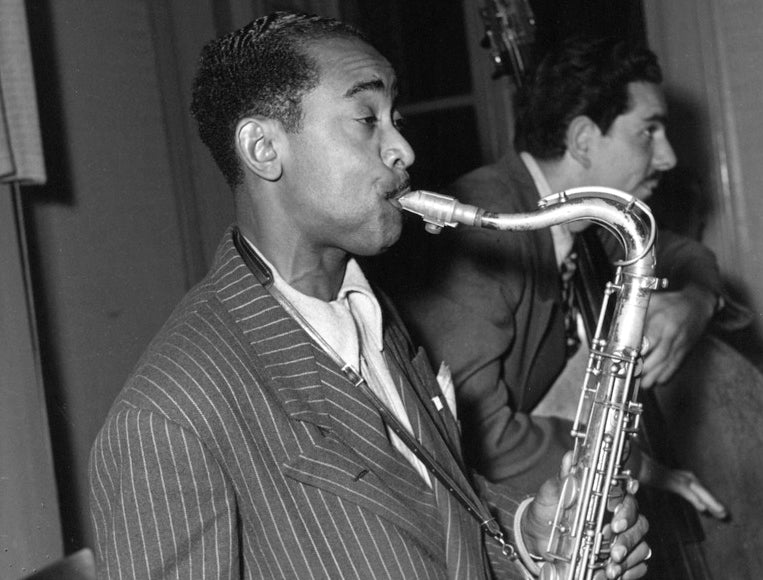Le saxophoniste ténor Don Byas a marqué le passage entre l'ère swing et l'ère bop. Souvent comparé à son aîné Coleman Hawkins pour la similitude de leurs tonalités, Don Byas a joué dans de nombreux groupes swing de haut niveau.
Don Byas

Tenor saxophonist Don Byas marked the transition from the swing era to the bop era. Often compared to his elder Coleman Hawkins for the similarity of their tones, Don Byas played in many top swing bands.
Carlos Wesley "Don" Byas was born in 1912 in Muskogee, Oklahoma. His mother played the piano and his father the clarinet. Byas began his training in classical music, learning to play the violin, clarinet and alto saxophone. He began playing in local bands at the age of 17 and then formed his own college band at Langston College, Oklahoma.
He switched to tenor saxophone in 1933 after moving to the West Coast. He worked with several of the leading bands of the swing period, including those of Lionel Hampton, Eddie Barefield, Buck Clayton, Eddie Mallory, Don Redman, Lucky Millinder and Andy Kirk. He recorded his first solo album in 1939: Is This to Be My Souvenir?
In January 1941, he replaced Lester Young as tenor saxophone soloist in the Count Basie orchestra. He stayed with the band for three years, and was particularly noted for his solo on Harvard Blues.
In the 1940s he shared the stage with bebop pioneers such as Max Roach, Dizzy Gillespie and Charlie Parker. Although he moved towards bop, Don Byas remained deeply rooted in swing. After making numerous recordings in 1945-1946, he left for Europe with Don Redman's big band and decided to settle there permanently.
He became a real star on the continent, especially in France, and regularly performed with visiting American jazzmen: Art Blakey, Kenny Clarke, Duke Ellington, Dizzy Gillespie, Jazz at the Philharmonic, Bud Powell, Ben Webster...
Don Byas died of cancer in 1972 and was inducted into the Oklahoma Jazz Hall Of Fame in 1997.